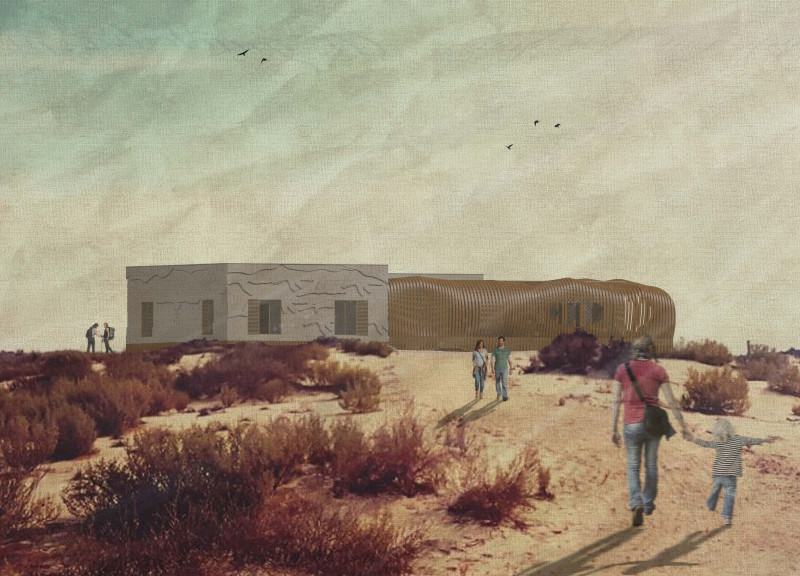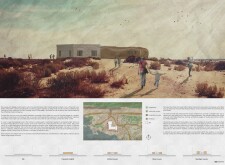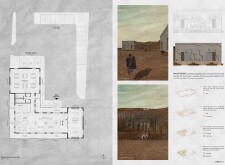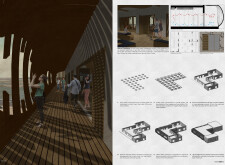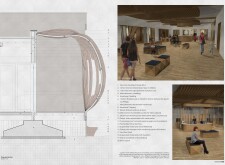5 key facts about this project
Functionally, the Visitor Centre serves various purposes. It functions as an educational hub where visitors can learn about the ecology of the wetlands, the significance of biodiversity, and conservation efforts. The layout includes exhibition spaces, classrooms, and areas for community workshops, all aimed at fostering a deeper understanding of the environment. These spaces are thoughtfully designed to create an inviting atmosphere, effectively bridging the indoor environment with the surrounding natural landscape.
The architectural design features several important elements that contribute to the overall experience of the Visitor Centre. The choice of materials reflects a commitment to sustainability and local context. The building utilizes Structural Insulated Panels (SIPs) as its main structural framework, promoting energy efficiency through superior insulation. This consideration not only reduces the building's carbon footprint but also enhances the comfort of the internal spaces.
Exterior surfaces are clad in CNC-milled limestone, chosen for its durability and visual connection to the local geology. This material not only provides a weather-resistant facade but also ties the structure aesthetically to its surroundings. The interplay of light and shadow created by the strategically placed timber louvres is an important aspect of the design, offering shade and enhancing natural ventilation within the building. These louvres create a dynamic interaction with sunlight, producing a rhythm across the building’s surfaces that is reminiscent of the natural forms found within the wetland.
Internally, the design places significant emphasis on creating a warm and inviting environment. The use of steam-bent hardwood and oriented strand board throughout the interior spaces contributes to a natural ambiance, promoting a connection with nature that aligns with the project’s educational mission. Large operable windows are integrated into the design, allowing for abundant natural light and offering breathtaking views of the wetland, further inviting visitors to engage with the external landscape.
The layout of the Visitor Centre also prioritizes accessibility and flow. Visitors can transition seamlessly between indoor and outdoor spaces, allowing them to explore the various educational exhibits or step outside to observe wildlife in their natural habitat. This thoughtful approach encourages visitors to interact with both the architecture and the landscape, facilitating a comprehensive learning experience.
An essential aspect of the design is its minimal impact on the environment. By utilizing concrete pads for foundational support, the project maintains a lightweight structural footprint. This consideration is crucial for preserving the delicate wetland ecosystem beneath the building. The project also integrates various sustainable practices, such as the use of natural materials and passive climate control techniques, to further align with its ecological ethos.
The Abu Dhabi Flamingo Visitor Centre demonstrates unique design approaches that prioritize harmony with the natural environment while fulfilling educational and community functions. The result is a cohesive architectural statement that emphasizes sustainability and environmental awareness. For those interested in delving deeper into the design, the architectural plans, sections, and various ideas presented in this project can offer significant insights into the intricate relationship between architecture, landscape, and community engagement. Exploring these elements will provide a richer understanding of how the Visitor Centre embodies its mission and reflects the values of ecological harmony and education.


